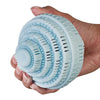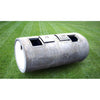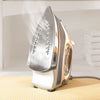What is an effluent filter?
Effluent filters go in the tank and take the place of the exit baffle. Any water leaving the tank must first go through this filter. Effluent filters are designed to prevent larger solids from leaving the tank and plugging up the drainfield.
They will cost $50 to $150 depending on the brand the contractor uses, plus the cost of installation. The cost to install the filter will vary depending on how hard it is to put it in, the danger level of installing it, and the contractor doing it. Most contractors will charge by the hour, anywhere from $100 to $250 per hour (usually the guy that works alone will charge less, but it takes them longer to get things done, two guys will charge more but they can work faster so it usually works out to the same amount).
If you have a shallow tank that is only one foot deep with a 6″ to 24″ opening over the exit baffle so they can get at it, you are looking at a fairly quick job. However, if they have to dig down 4′ and there is only a 4″ opening over the exit baffle (or none at all) and they have to physically get inside the tank (weeeee…what fun) to install it, obviously they will need to charge more.
Per contractor pricing: Some contractors do charge an exorbitant amount for this extra type of work. I know of some that will charge $800 to jet the lines in the drainfield or install an effluent filter and in most cases this is way too much. What you want to do is start calling septic contractors and ask them if they do this type of work (not all do) and ask them if they have a set charge or if they bill on time/materials. Then ask them what a typical bill would be. Keep in mind they will need to pump the tank prior to working on it so this should be included in their pricing (that is why you want this done when you are going to have the tank pumped/inspected anyhow).
And if you really want to save a few bucks, dig up the top of the tank before they get there so they can get right to work. Just make sure you have an idea where to dig (many is the homeowner that ends-up with a yard that looks like a mine field because they didn’t know where to put the shovel).
Do you need to install an effluent filter? Well, kind of. You see eventually, usually after 20-30 years, the connections that hold the exit baffle in place are going to let go and it is going to fall off anyway (even concrete baffles are going to fall off) and it will need to be replaced. When they make a replacement baffle they make it out of PVC pipe and attach it to the pipe coming into the tank, not the tank itself, so there is no connection to the tank that can corrode and come off. It is a permanent solution. An effluent filter is made out of PVC and also attaches to the pipe coming into the tank.
So to my way of thinking, you are going to want the baffle replaced sooner or later anyhow and you may as well do it before the original one falls off and allows damage to occur to your drainfield. And as long as you are going to be paying them to replace the baffle, you may as well spend the extra $100 or so and have them put in a filter that will protect the drainfield as well.
How urgent is it to get it done right away? What I tell people is, if your system is more than 20 years old, or if you have children and/or do a lot of entertaining, then have an effluent filter put the next time you have the tank pumped. Small children will flush anything and everything down the drain because they don’t know any better. Teenagers will flush evidence (cigarette butts, condoms, etc.) and visitors will flush kotex and tampex. Most of these items are manufactured with synthetics and will not breakdown completely. Eventually they could make it out to the drainfield where they will cause permanent damage.
But if your system is newer or if it is just one or two adults in the house and you don’t have a lot of visitors, you can control what goes down the drain and prevent this damage. In cases like this, although an effluent filter is a positive, you don’t need one as much as a “busier” house.
However not everyone is sold on effluent filters. One thing many homeowners and contractors found when they first came out was, these filters would clog on a frequent basis generating complaints from the homeowners. One of the reasons effluent filters clog so quickly is from washing machine discharge. Washing machines discharge a tremendous amount of small fibers and although much of it will go right through an effluent filter (damaging the drainfield) a fair amount will get trapped and eventually cause it to plug.
There are 2 ways to deal with this, clean the filter (you can do this yourself) or install a washing machine filter called the Filtrol 160.
Note: One of the manufacturers (Zabel) is making their effluent filters with very small holes. I believe the reason they are doing this is because they want try and capture the washing machine discharge as well. The problem with this is, sewage naturally contains a high level of solids. These solids are primarily organic materials that will breakdown easily once they get to the drainfield. When an effluent filter is too small it will plug frequently…in the case of these filters, as often as 1½ weeks. This creates a big problem with the homeowner that is forced to (or pay someone) to clean the filter often.













